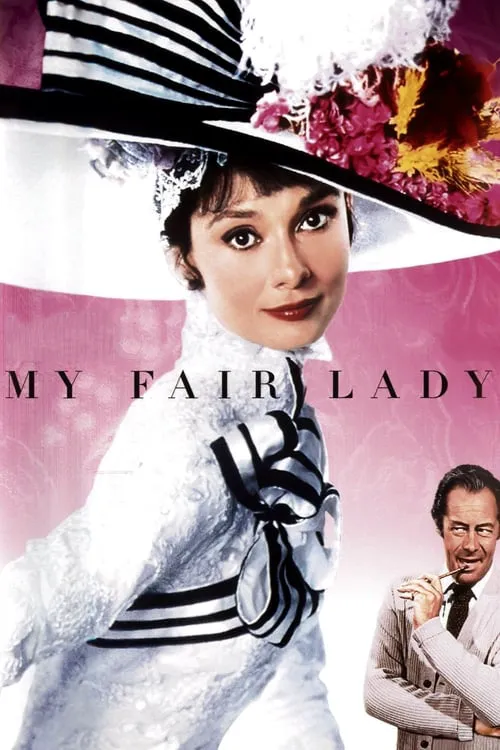My Fair Lady

Plot
In the iconic musical comedy "My Fair Lady," a transformation of sorts is underway – not just for the protagonist, Eliza Doolittle, but also for herself and those around her. Set in the early 20th century London, the story revolves around the complex lives of Professor Henry Higgins, a self-proclaimed expert in the art of linguistics, and his bet as to whether or not he can make a flower girl, a street-smart Eliza, presentable in the upper echelons of society. The story begins with Eliza, a Cockney-speaking flower girl struggling to earn a living on the streets of Covent Garden. She attracts the attention of Professor Henry Higgins, a renowned phonetics expert from the University College London, who is determined to use his expertise to change her speech and demeanor completely. This chance encounter is not by coincidence but rather the result of an ongoing debate between Professor Higgins and his colleague, Colonel Hugh Pickering, a former Indian civil servant, who challenges Higgins to transform a flower girl into a refined lady. Eliza, sensing an opportunity to improve her situation and increase her earning potential, agrees to join Higgins's experiment. He promptly takes her under his wing and begins to educate her in the art of proper speech. With the help of his phonetic skills, he meticulously corrects Eliza's Cockney accent, teaching her the pronunciation, diction, and intonation of upper-class English. At the same time, Higgins sees this as an opportunity to prove his worth and demonstrate his exceptional skills as a linguist. As Eliza progresses through her lessons, she starts to transform from a lowly flower girl into an elegant and refined lady. She rapidly acquires the vocabulary, mannerisms, and social etiquette that are characteristic of upper-class London society. However, behind this newfound transformation lies the struggle of a woman torn between her natural instinct to retain her self-identity and her growing dependency on her instructor. Meanwhile, Professor Higgins's relationship with his own background and social circle is also a subject of exploration in the movie. The professor is portrayed as a somewhat aloof, yet charismatic figure, who uses his intellect and expertise to hide his true feelings and insecurities. His disdain for the social conventions that govern the lives of the upper class is reflected in his disdain for Eliza's initial circumstances. However, through his association with Eliza, Higgins is forced to confront his own limitations and confront the limitations of the elitist society he inhabits. On the other hand, the figure of Eliza serves as the perfect contrast to Professor Higgins's self-assuredness and superiority. Her experiences as a flower girl offer a glimpse into the harsh realities of her life, and her growing self-awareness forces her to confront the constraints and expectations placed upon her. Despite the professor's attempts to educate her, she continues to retain a sense of independence and spirit, refusing to conform entirely to the social norms. The movie showcases the relationship between Eliza and Higgins through a beautiful and intricate dance of wit and banter. With each lesson, the two develop an increasingly complex relationship – one that oscillates between the boundaries of mentor and student, and something more profound and intimate. Their interactions are infused with a deep and abiding affection for one another, tempered by an understanding of their social differences. As the story unfolds, the figure of Alfred P. Doolittle, Eliza's lovable but rough-around-the-edges father, serves as the antithesis to Professor Higgins's fastidious and refined persona. Doolittle's character serves to highlight the contrasts between the working class and the upper class. His rough-hewn nature, though charming and charismatic, also underscores the stark realities of Eliza's world. In one of the movie's pivotal moments, Eliza is tasked with passing herself off as a refined lady at an upper-class ball, where she must confront the harsh realities of the social hierarchy and the expectations placed upon her. The moment becomes a defining moment in the movie, as Eliza stands at the threshold of her new identity and must decide whether to conform entirely or to preserve her natural self. Ultimately, "My Fair Lady" is a powerful exploration of the themes of identity and social class, as embodied through the enigmatic and captivating relationship between Eliza and Professor Higgins. Theirs is a story of transformation, not just for Eliza but also for themselves as individuals. The movie reminds us that true transformation is not simply a product of external changes but rather an internal process of self-discovery and growth.
Reviews
Recommendations




